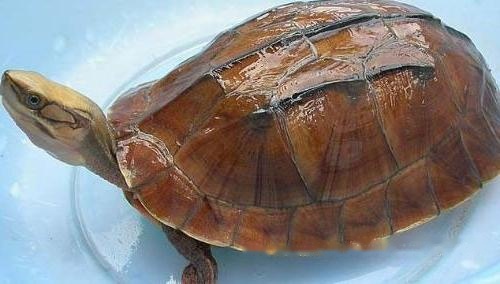The money turtle, a species of the turtle family, likes to choose a shaded place to inhabit, has the habit of living in groups, and hibernates every winter. The money turtle also has extremely high medicinal value. It is a traditional Chinese medicinal material. It has the characteristics of wide range, strong disease resistance and hunger resistance, and strong vitality, so it is relatively easy to raise the money turtle, but the money turtle mainly likes fish and shrimp in the water. The small aquatic animals, the following also introduces the feeding method of the money turtle.

In the breeding of golden turtles, after hatchlings hatch, the most important step is to ensure that the young The survival rate of turtles, if we can do this? This starts with the collection of juvenile turtles. Here is a brief introduction.
1. Collection of hatchlings
The hatchlings that have just hatched from the fertilized eggs are called hatchlings. When the juvenile turtle crawls out of the shell, it cannot be taken out immediately, let it crawl on the sand for 1 to 3 hours, and then put it into a wooden or plastic basin for 2 to 3 days to let its umbilical cord dry and converge, and its body is formed by The curl becomes straight and flat, and the yolk sac is completely absorbed, preventing the yolk sac from being rubbed and infected by bacteria. The standard juvenile turtle is that the umbilical cord has completely fallen off, the umbilical hole is closed, the individual weight is greater than 10 grams, the activity is sensitive, the physique is robust, and there is no disease or injury.
Second, entering the pond
The juvenile turtle pond is preferably made of 2~3 square meters of plastic plate tortoise support, and the water depth is about immersed in the turtle The back 2 cm is suitable, the food table is set at 2 cm above the water surface, there is light, rest, and the back table is set. In winter, heating and breeding should be carried out, and the temperature should be controlled at 28-30 degrees. No sand is spread under the feed table to ensure the freshness of the water quality.
Three. Feeding
The energy and nutrients needed for the growth and development of hatchlings are completely provided by the yolk. From the change in yolk size, we infer the utilization of the remaining yolk to determine the date and amount of feeding. Feed a small amount of cooked egg yolk tame food 3 days after hatching, and feed minced fish, shrimp, snails, mussels, livestock and poultry offal and other bait after 5 days, supplemented with vegetables and grains, and the ratio of animal and plant bait is 2 :1. The amount of feeding accounts for 5% to 10% of the total amount of juvenile turtles, and they are fed twice a day, at 8-9 am and 5-6 pm, and it is advisable to finish them within 2 hours.
IV. Water Quality Management
The water source is preferably water from non-polluting rivers, lakes and reservoirs. Water is the main environment for juvenile turtles to survive. If the water is polluted, it will directly affect the health of the turtles. Therefore, it is necessary to keep the water in the turtle pond clean, with a transparency of 25-30 cm and a pH of 7-8. Remove the residual bait that sinks to the bottom of the pool every day, change the water once a day, and thoroughly clean and disinfect the bottom of the pool when changing the water. The water temperature is controlled at 25~30℃. In the high temperature season in summer, measures to prevent heatstroke and cool down should be taken. When changing the water, special attention should be paid to the difference in water temperature between the new and old water.
![[Dog Training 5] The training method of pet dog dining etiquette](/static/img/12192/12192_1.jpg)




